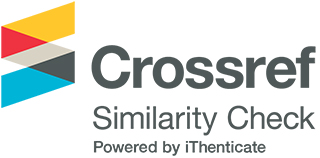Foreign Direct Investment and Nigerian Macroeconomy
DOI:
https://doi.org/10.33422/eje.v4i1.619Keywords:
FDI, Macroeconomic variables, ARDL, NigeriaAbstract
The study examines the effects of macroeconomic variables on Foreign Direct Investment (FDI) inflow from 1981 to 2022. Different from existing studies, this study also captures the effect of regime shift on FDI inflow to Nigeria, which enabled us to capture the role of political system in crowding-in FDI. The Autoregressive Distributed Lag (ARDL) model was adopted to show the long-run relationships and dynamic interactions between FDI and the macroeconomic variables. The estimated long-run and short-run coefficients for FDI models revealed that inflation rate and the degree of openness of the economy are significant factors inducing FDI inflow to Nigeria. The GDP growth rate and non-oil export also positively affect FDI inflows in the long run. However, they are not statistically significant. The key policy variables, exchange rate and monetary policy rate, have significant effect on FDI inflows to Nigeria. The estimated results show that exchange rate depreciation causes an increase in foreign direct investment inflows. This is in accord with the real wage channel theory which states that currency depreciation reduces the country’s wages and production costs relative to those of its foreign counterparts. The study recommended that exchange rate stability is very crucial for attracting FDI flows to Nigeria; Government should reduce the monetary policy rate which is presently considered too high and adversely impinging on FDI inflows; while intensifying the war against corruption in all forms and at all levels.
Downloads
Published
Issue
Section
License
Copyright (c) 2024 Louis N Chete, Iyabo Olanrele, Jacob Sesugh Angahar

This work is licensed under a Creative Commons Attribution 4.0 International License.











